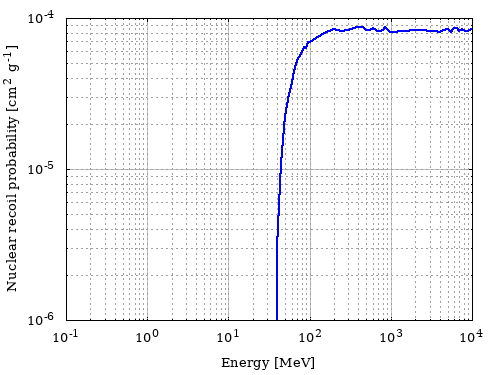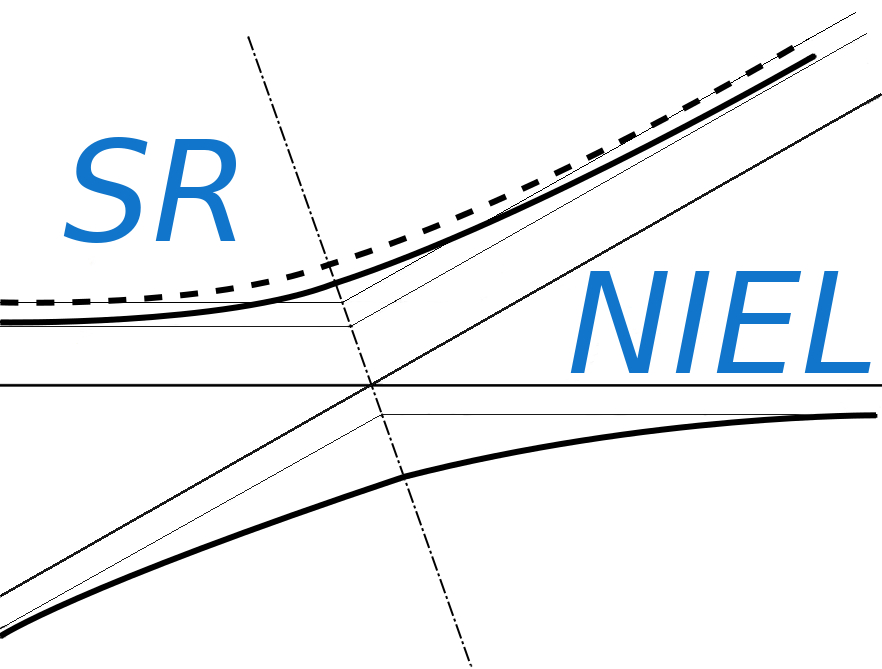
(total probability in cm2g-1) x (absorber density in g cm-3) x (traversed thickness in cm),
where the "total probability in cm2g-1" is obtained by the web calculator, absorber density and traversed thickness are defined by the user.
Eener is the the lower limit of recoil energy (for explanation see Energetic Nuclear Recoil Page)
 The overall results is that the NIEL and the Nuclear Stopping power (thus, the Recoil Probability) are affected by the form factor. Numerical results for 183 MeV electrons in In are presented in the following table:
The overall results is that the NIEL and the Nuclear Stopping power (thus, the Recoil Probability) are affected by the form factor. Numerical results for 183 MeV electrons in In are presented in the following table:



